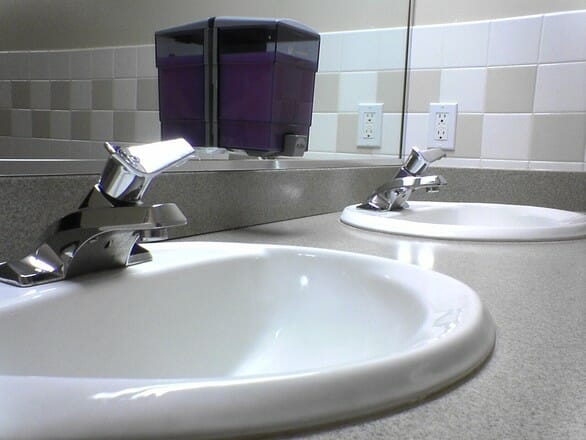Understanding Backflow Prevention Devices for Commercial Properties
Backflow occurs on your property when water from an unwanted source flows back into your pipes. This can cause a range of health problems, by allowing contaminants to be introduced into the building’s drinking water supply. In order to avoid this problem, it is necessary to install a backflow prevention device. This is a legal requirement, and it is good business practice to protect employees, visitors, and customers. There are two forms of backflow; the first is known as back pressure and the second is back siphonage. They both work in very different ways, understanding them will be helpful to recognizing if there may be a backflow problem in your building.
Back Pressure Backflow
This type of backflow occurs in a few different circumstances; it sometimes happens when the pressure downstream in the public water supply increases. It can also occur when the there is a drop in the building’s potable water supply. Also, an increase in the temperature of the building’s boiler, can also cause back pressure. There may be a single cause, or it could be a combination of some or all of these factors that may cause the problem.
Back Siphonage Backflow
When back siphonage occurs, it is usually because of a reduction in water pressure. This may be a result of a leak in the water mains, or it could occur if there is a higher demand on the water system. A higher water demand may be the result of hot weather in the summer months, a local water hydrant leak or nearby firefighting. This drop in pressure will be immediately noticeable as the water will dribble from the faucet rather than flow steadily.
The Consequences of a Backflow
As mentioned earlier, there are significant health concerns that can arise because of backflow issues in your building. This is because there is a potential for pesticides, descalers and even raw sewage, to be forced back up your pipes and into your clean water supply. The results of drinking water that has been affected by these contaminants can be disastrous to your health. You may find, that this is immediately obvious because of the color or odor of the water flowing from the faucet. This may indeed be the case, but in the case of some contaminants, it may not be that obvious, so regular testing of the backflow device is essential.
The Backflow Prevention Device
By law, every commercial property must have a backflow prevention device fitted. These devices should be tested once a year after they have been fitted. If your device is repaired or replaced, it must be tested again to ensure that it is working correctly. The backflow prevention device should only be fitted and tested by a qualified plumbing professional. A reputable commercial plumbing contractor will be able to carry out the necessary testing, to ensure that the device is working correctly. They will also be able to submit the required paperwork to the water department on your behalf. It is important, to choose a commercial plumbing contractor that provides an estimate up front, so that you understand what the costs will be, prior to the work being carried out.
By Giovanni Longo President Flood Brothers Plumbing
Giovanni Longo is a 3rd generation master plumber who has been practicing his craft and trade in the greater Los Angeles area for well over a decade and a half. A plumbing and hydraulics-engineering innovator, Giovanni’s particular world-class expertise focuses on dealing with challenging sewer system designs as well as resolving complex commercial and residential draining issues. As a certified Flood Mitigation expert, he is also well versed in a wide variety of water damage and remediation solutions.





